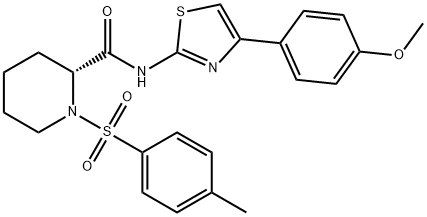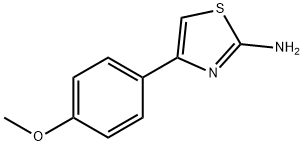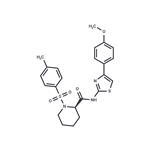Description
Potassium (K
+) channels are categorized by their mode of activation and the number of transmembrane segments. The voltage-
gated six-
transmembrane K
+ channels include KCNQ1, first recognized for its role in cardiac function and subsequently in hearing, gastrointestinal chloride secretion, and other processes. ML-
277 is a potent activator of KCNQ1 channels (EC
50 = 260 nM). The EC
50 value of this compound at the related channels KCNQ2, KCNQ4, and hERG exceeds 30 μM. ML-
277 potentiates both homomultimeric KCNQ1 channels and unsaturated heteromultimeric (KCNQ1/KCNE1) channels in model cardiomyocytes and augments delayed rectifier K
+ current in cultured human cardiomyocytes.
Biochem/physiol Actions
ML277 is a potent activator of KCNQ1 (Kv7.1) channels with >100-fold selectivity versus KCNQ2 and KCNQ4 and no activity against the hERG potassium channel up to 30 μM. KCNQ1 is a voltage-gated potassium channel required for repolarization phase of the cardiac action potential. Mutations in the KCNQ1 gene are associated with long QT syndrome (LQTS), a disorder in which the heart muscles take longer than normal to recover after each heart beat and can lead to dangerous arrhythmias such as atrial fibrillation. Activators of KCNQ1 channels could have potential use in treatments of LQTS. ML277 is the first selective and potent activator found, with an EC50 of 260 nM.




